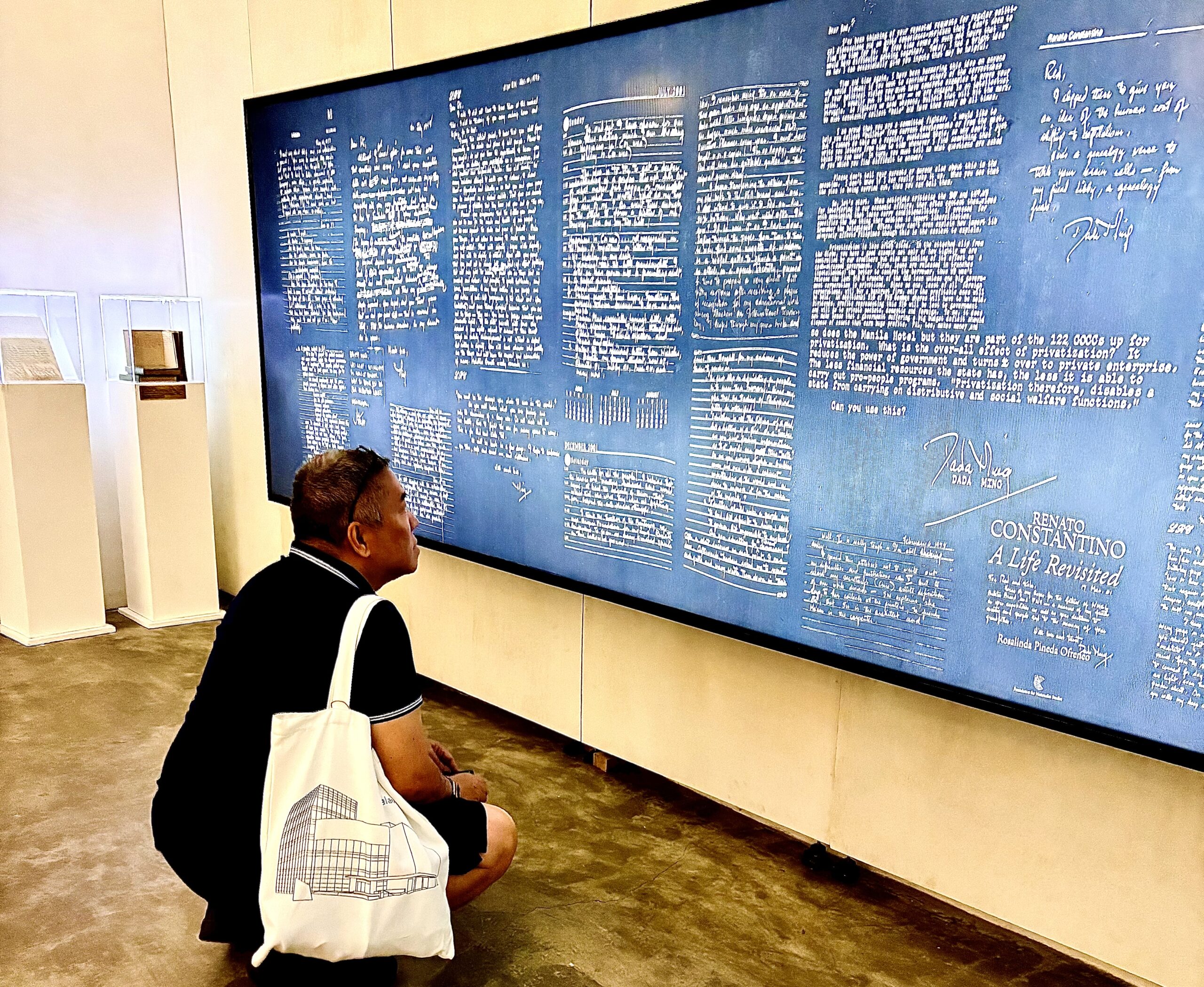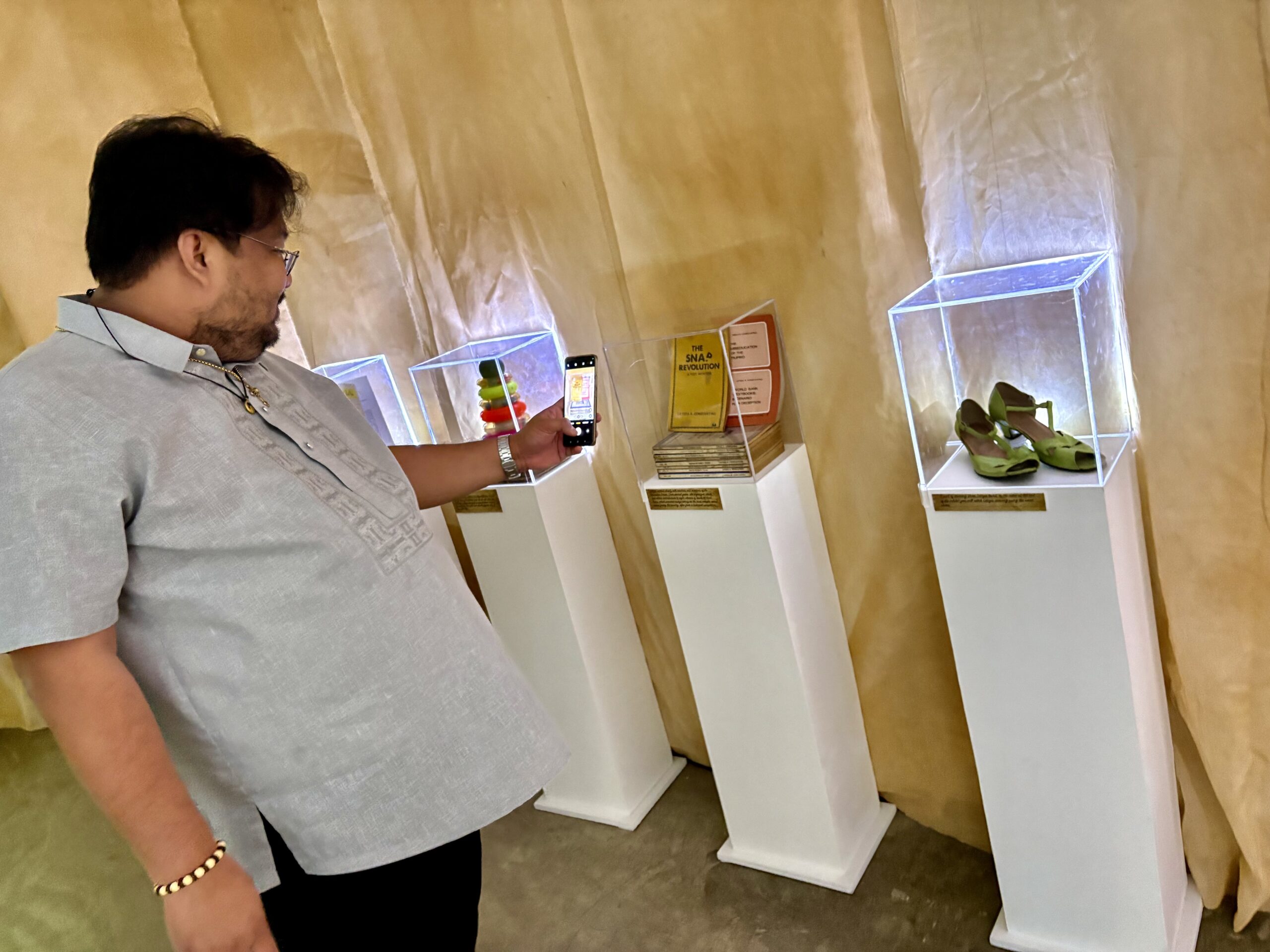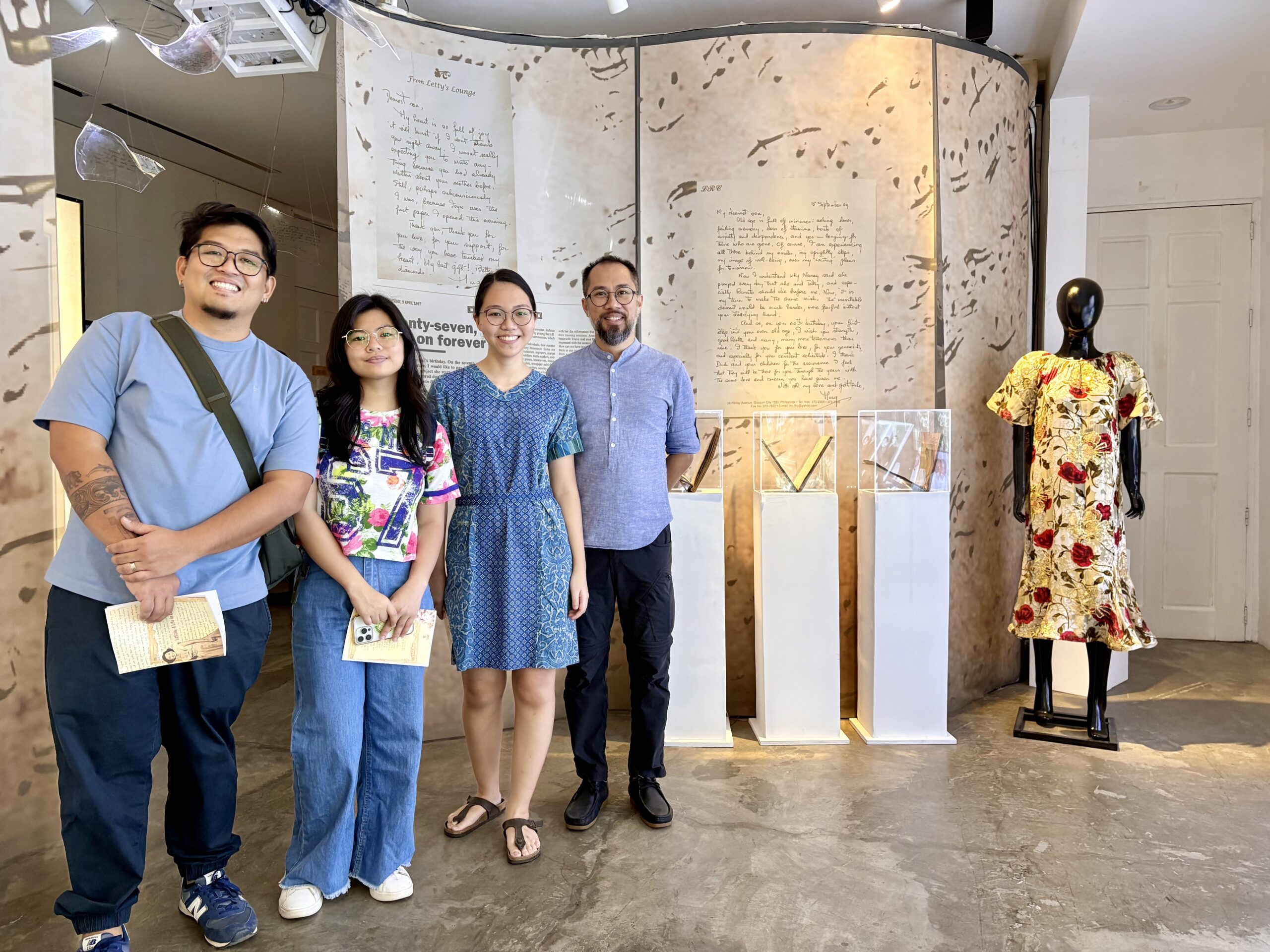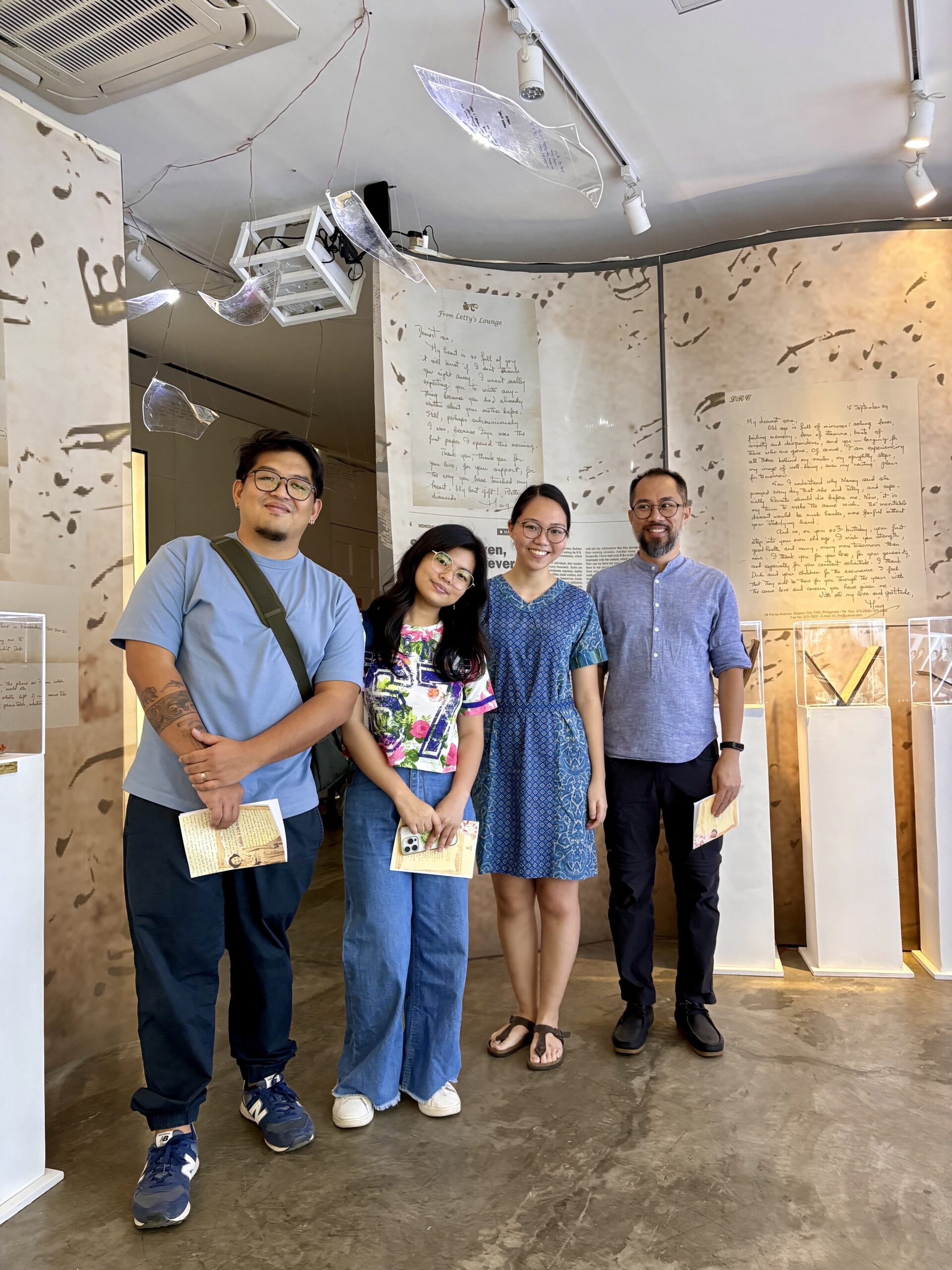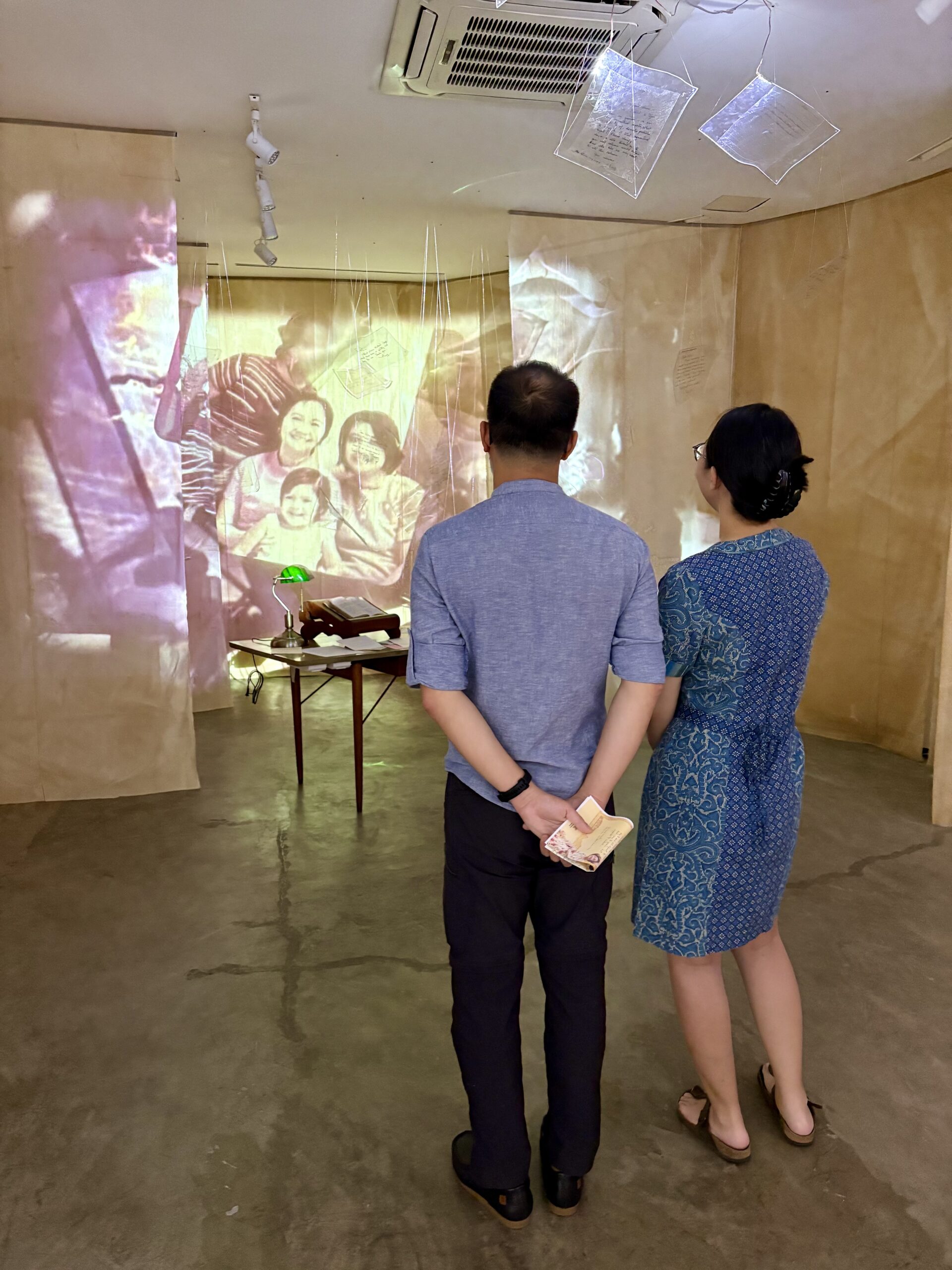by Red Constantino
After three days of a pewter sky came sunshine.
Zachary See, an intellectual who hides the fact that he’s a baker of seriously lovely scones, and historian Ambeth Ocampo, strode into the Constantino Foundation compound the other week to see the exhibit, Letizia: A Life in Letters. They joined Girlie and Kartini Alampay, who had walked in minutes earlier.
It was the day before free public access to the Linangan Gallery ended. The exhibit’s visitors seemed gratified with their experience. Girlie and Kartini were certainly delighted to have their photos taken with Ambeth, Zach, and my mum Lourdes Constantino, Dudi to friends and family, especially to the love of her life, RC Constantino, the foundation’s president, who passed away in April 2024.
Ambeth would write about the exhibit a week later, which made everyone in the foundation glad: the historian liked what he encountered. To describe his experience as immersive “is an understatement,” said Ambeth. “I felt like a child in a candy store, not knowing where to start or where to look. Each manuscript text was trivial or irrelevant by itself, but when taken all together as the sum of its parts, the writing revealed a long life fiercely dedicated to Philippine history and the Filipino youth for whom she wrote.”
The exhibit about Letizia Roxas Constantino has been many things to many people, and we’ve received a lot of valuable feedback – on history, the importance of teachers, handwriting, burgis stories, feminism, fascism, love of country and people, keeping diaries, writing letters, fools in government, and more. We were understandably keen to find out how someone with Ambeth’s particular inquisitiveness – not just on history in general but his keen interest in both broad strokes of the the past and the minutiae of its pecularities – would receive the individual artifacts and narratives offered by the exhibit, as well as its totality.
To describe our response to the historian’s column as “pleased” is a greater understatement. My mother smiled quietly as she read Ambeth’s essay over breakfast. After she finished the article, she added a bit more: “I’m glad Ambeth liked our exhibit. He writes the way he comports himself in person, light-hearted, with care and introspection, light touch, even when he’s writing about heavy topics. I hope he’ll be back later, even for merienda. Did you tell Zach he can come over anytime? Ay what a happy day that was.”
I told my mum how vexing Ambeth must be to his detractors. They’re so caught up in their grand theories they don’t notice the way that thing Ambeth wears frequently, the mischievous smile that finds its way in his columns, it goes over their heads and makes them even funnier. “Totoo!” replied Dudi.
Dudi was happy Ambeth and Zach stayed for lunch. Laughter, moments of reflection, questions and recollections: We had a modest meal compared to the sumptuous buffet of stories we consumed that day. On art, memory, books, food, and the forgetfulness plaguing the nation.
We laughed at Ambeth’s recollection of Tato, as Renato was called by friends and colleagues, that he was masungit. He said Letizia was warm and affectionate with him and we told Ambeth our Dada Ming, the name for Letizia used by her grandchildren, shared to us many times that she was fond of him and his work, because he made history interesting and thus compelling.
Towards the end of the meal I told Ambeth something that I said might sound familiar to him: in the tower of academic Filipino historians, Renato’s critics tried often to dismiss him, saying “Constantino is just a journalist.” Well, said Ambeth, “That sounds familiar!” I said constipation seems to be a perpetual affliction for some and the whole table laughed out loud. Again.
Later that afternoon, historian Xiao Chua would drop by on his own. As he moved across the display of letters and diaries, he shared his memory of an interview he conducted with Letizia over a decade ago in the ancestral house of the Constantinos.
The following morning, a historian of deeper time, the archaeologist Riczar Fuentes and his illustrator friend Sarita Chiu, came over as well. They said they were likewise impressed with what they saw and read. Along with his colleague, Alfred Pawlik, Riczar had written a scientific study published last April showing “new analysis of ancient maritime travel in the Philippines over 40,000 years ago . . . [revealing] the first verified use of advanced technology in the region, including building sophisticated boats and perfecting deep-sea fishing capabilities thousands of years earlier than previously believed.”
Keepers of memory, indeed. Where would we be without them? We exist, and we will continue to exist, because of the work of historians, and the story of our nation will remain incandescent so long as their work is unfettered and sustained.
If you’re interested in visiting, please confirm your appointment by filling out the form below: 🔗 https://forms.gle/YYFDFJAfS1uejQ5Q9

